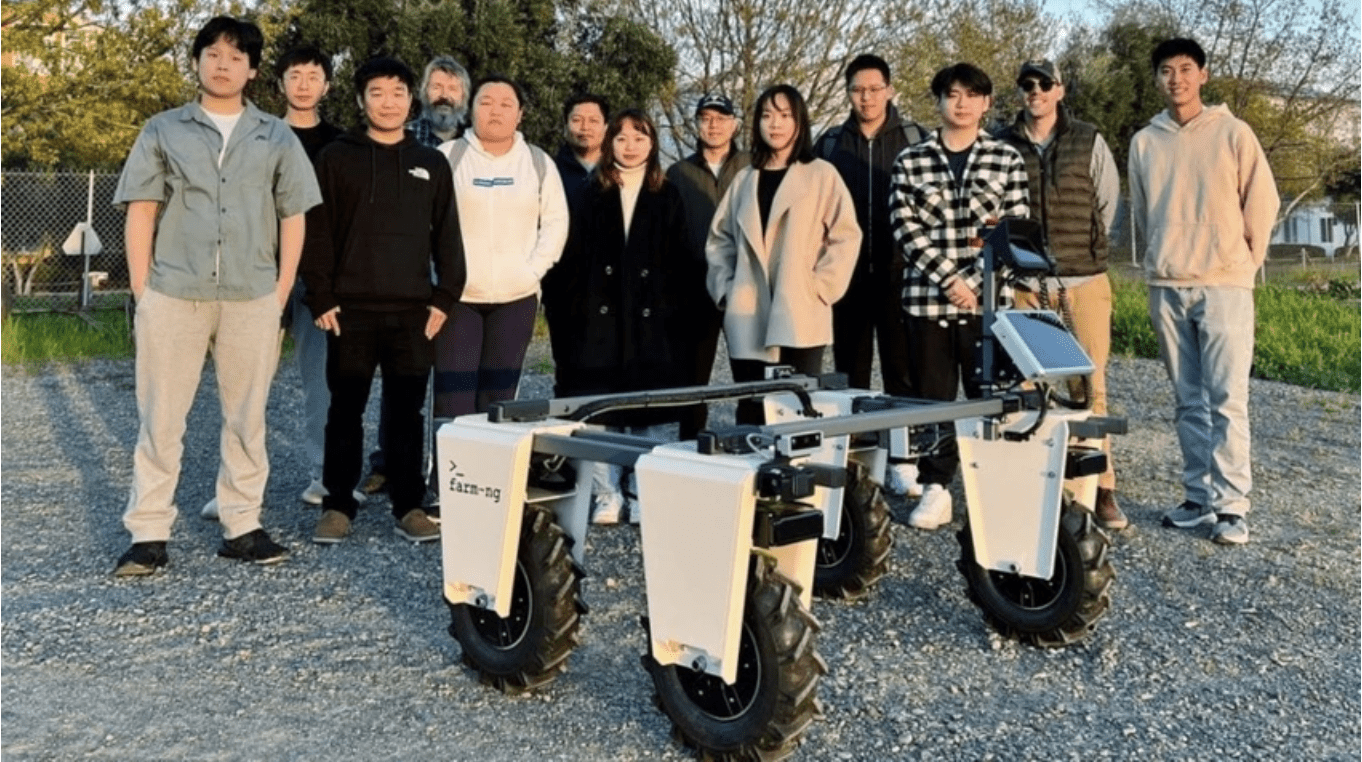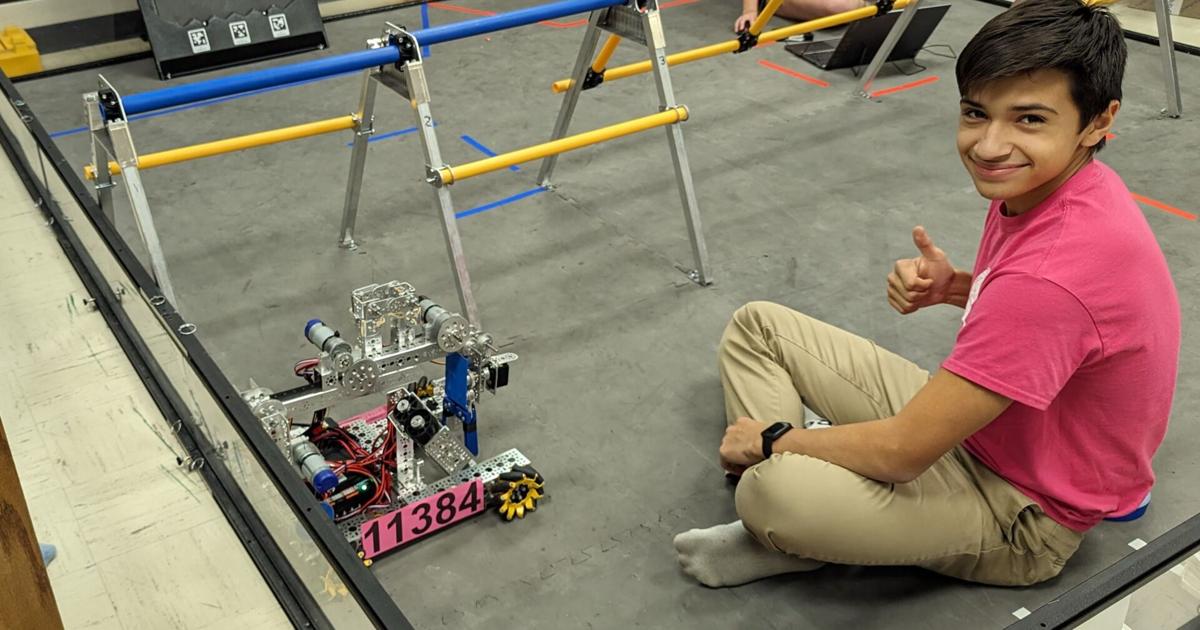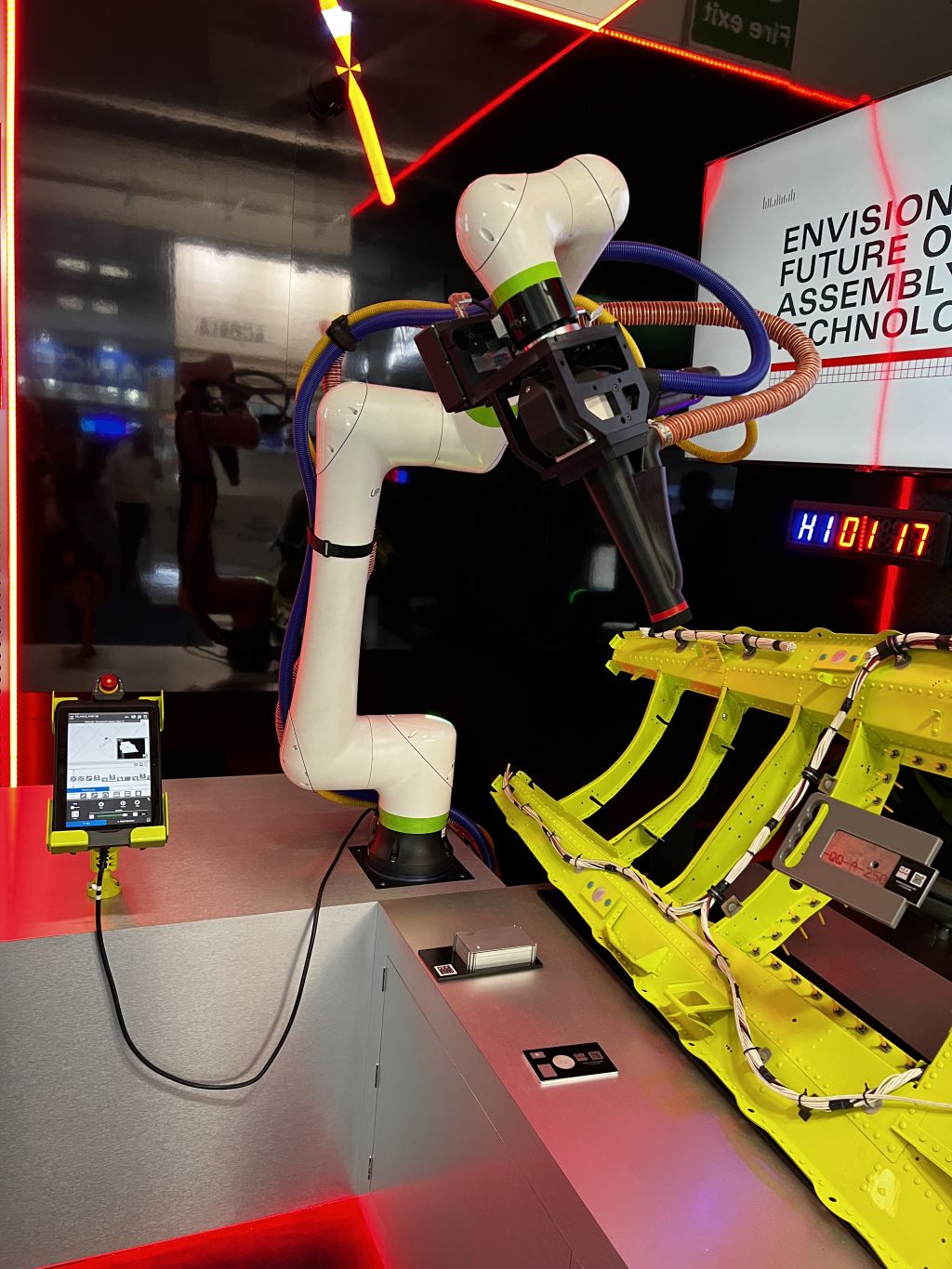Startups have made strides in the last few years turning the theoretical benefits of ag robotics and automation into actual realities for farmers. But there’s still a ton of work to be done when it comes to making tools that are complex enough for smart spraying and laser weeding, but don’t also require a PhD to operate.
Ergo, startups will have a lot of new hires to make in the coming years, many of them from the growing pool of talent coming out of college, said many at the FIRA USA 2023 farm robotics show in Salinas, California.
Enter the annual Farm Robotics Challenge organized by the AI Institute for Next Gen Food Systems (AIFS), University of California Agriculture and Natural Resources (UC ANR) initiative the VINE, the Fresno-Merced Future of Food (F3) coalition, and robotics company farm-ng.
The three-month-long challenge aims to give students hands-on experience developing practical applications for farm robotics while also training up the next wave of talent for the agtech industry to hire.
“We always had this mission to bring tech and agriculture and education together in a creative ways,” says Gabe Youtsey, CIO at UC ANR and cofounder of the VINE.
At tFIRA, Youtsey announced the launch of the second annual Farm Robotics Challenge, which is currently taking registrations. In conversation with AgFunderNews at the show, he laid out the benefits of such a program for students and startups alike.
What’s driving autonomy on the farm
Before that, however, he outlined three main reasons farms need more automation and robotics, and why this must happen quickly.
The biggest is the increasingly scarce supply of labor to do “dirty or dangerous” jobs.
“If the economy is any kind of good, those workers have opportunities in other fields,” he explains. “We’re competing for them with restaurants and hospitality industries. We can pay them pretty well, but there’s just less and less of those workers.”
A well-executed automation solution can also provide environmental benefits to the farm, such as reducing chemical inputs and better management of water supply.
Many of the farm robots and autonomy tools coming to the farm are also meant to work alongside humans, alleviating some of the burden. See auto-weeders from Stout Robotics and Verdant Robotics, two products that still require human input but (in theory, at least) lessen the physical toll of farming on the person. [Disclosure: AgFunderNews parent company, AgFunder, is an investor in Verdant.]
“They may improve farm workers’ lives in some cases,” says Youtsey. “They may actually make them more profitable because [autonomy] speeds up the entire process.”
Designing beyond the technology
In a nutshell, student teams in the Farm Robotics Challenge identify a real-world problem in agriculture (e.g., back-breaking weeding) and, after submitting a proposal, develop a solution a panel of judges then assesses. Prizes are awarded to the most promising.
Last year’s grand-prize winner was Amiggie, a UC Davis team developing harvest-assist robots. Another UC Davis group, Robo-Ag, won the Elegance in Design award for its robot that does targeted pesticide application, while Huskerbot from the University of Nebraska won the Complexity in Design prize for its own pesticide-focused ‘bot.
As the above list illustrates, autonomy, AI and farm attachments are three key areas of focus for Challenge participants — though the Challenge isn’t merely about building fancy tech gadgets.
“The challenge showcases the need and potential for a range of different technical and social disciplines to come together,” says Youtsey. “It showcases the opportunity and the need for interdisciplinary work — an application that mimics the what these real world companies are hiring for. Students get a preview of the different types of people needed for robotics companies.”
By way of example, he says some teams from last year’s challenge included social scientists, biologists, chemists and statisticians, in addition to engineers and computer scientists.
“One of [last year’s] teams had a child of a farm worker. He goes to UC Santa Cruz and didn’t imagine himself as the engineer of an agtech solution. So the program is providing kids with the confidence to produce a real-world solution.”

Learnings from year one
For the Challenge, students work with California-based farm-ng, which makes a small-format “micro-tractor” robot. Organizers chose the product partially thanks to its small format and low cost, says Youtsey.
“We thought, ‘Let’s try to actually get all these universities trying to get kids into agtech and pair up a commercial-scale platform with the best and brightest of our undergraduate universities all over the US.”
The inaugural event hosted 17 teams across 15 universities in the United States — about 160 students total, he adds.
That $20,000 price tag on each individual robot is big barrier to many universities, he says. “It’s not a lot of money, but it’s hard to find on a dime for a university.”
Thanks to grant funds, Farm Robotics Challenge was able to buy 11 [Farm NG] robots and loan them out to the participating universities.
However, he notes that a major learning from the first year of the challenge is that the Challenge will need to continue to find “creative ways to fund robot purchases” for these universities.
There’s also a layer of fundamental knowledge about robotic operating systems that even the brightest students need in order to work with the machines.
“We need to do some underlying training for the kids to get them to a baseline level so they can create real [robotics] solutions that work,” he explains. “And we need to do a tad bit more to make sure they have a real good set of potential problems to solve for real growers’ solutions — whether it’s a really small grower or a very large farm.”
Shifts are happening, he says. Thanks to the tech downturn, would-be employees of SaaS startups are leaving Silicon Valley and heading to food valleys like Salinas.
“The supply of agtech workers is only as good as the amount of agtech companies out there,” he adds. “There are quite a few young engineers, computer scientists and students that are really interested in going into that field. But there have to be ready jobs available to support that.”











